In light of International Women's Day, let's take a look at the true female warriors of the ancient world.
In ancient times, a warrior was a brave or experienced soldier or hunter, or a person who was engaged or experienced in warfare.
Among the hidden treasures in history are women who won battles, destroyed empires and created kingdoms.
Amanirenas:The Nubian Queen
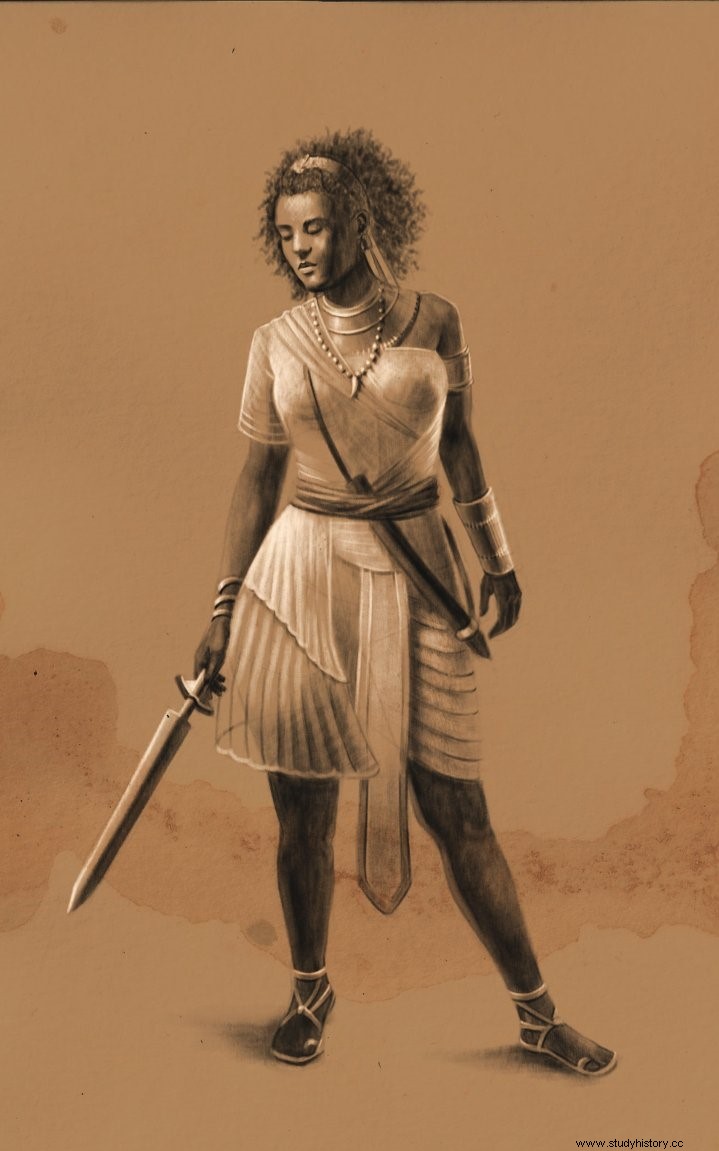
Nubians trace their origins to the land of Kush, now Sudan.
The Egyptians, their northern neighbors, referred to Nubia as Ta-Seti , 'Buenes land'.
Nubian hunters and troublemakers were excellent archers.
Archery was not limited to men, as women matched them just as much.
This led to an increase in female Nubian warriors and queens.
Amanirenas was born between 60 and 50 BCE
Her full title:'Amnirense qore li kdwe li' ('Ameniras, malm og kandake'). In English it translates to "Ameniras, king and queen".
She was the second of eight kandakes, who ruled between 40 and 10 BCE
Queens and Queen Mothers ruled as sole rulers of the kingdom of Kush in Nubia.
The Amanirenas ruled between the Nile and the Atbara River.
The Roman Conquest of Egypt
In 30 BCE, under the rule of Emperor Caesar Augustus, Rome conquered Egypt. It became one of the provinces of the Roman Empire.
Emperor Augustus tried to expand his empire to the south, into the kingdom of Kush.
In 27 BCE, the Roman provincial governor of Egypt tried to impose taxes on Lower Nubia, which was controlled by Kush.
As a result, it invited the Kushites to attack the Roman cities of southern Egypt. De vant.
In the early stages of the Five Years 'War, Amanirenas' husband, King Teriteqas, died in battle.
The responsibility for leading the war lay with Amanirenas and her son, Prince Akinidad.
The Five Years' War
Amanirenas received news of an impending Roman attack.
Since Kush had the smaller army, the Kush queen needed to think strategically.
Her decision was to take the battle to the Romans and launch a surprise attack.
She led 30,000 Nubian soldiers, men and women, armed with swords and bows and arrows, with her son by her side.
It was a successful attack that captured three major cities.
As a statement of their victory, the Nubian soldiers mutilated statues of Emperor Agustus.
A very angry emperor Augustus retaliated by invading Kush, destroying its ancient capital and selling thousands into slavery.
Amanirenas retaliated quickly and repeatedly.
During one battle, she lost the eye of a Roman soldier.
After her wounds healed, she returned to lead her army against the Romans.
She lost her son in 24 BCE
When she escaped the Roman siege of Napata, she raised an army and marched on the fortress of Premnis.
The legions arrived, but neither side attempted to take part in the battle, which led to peace talks.
Her demands:Emperor Augustus to take his army out of Egypt, give the Nubians their land and cancel all taxes.
As a queen and a brave female warrior, she spared her people centuries of domination.
Lady Fu Hao
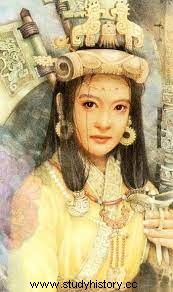
Archaeologists excavated nearly 10,000 oracle bone inscriptions.
200 of them were by a female warrior, Lady Fu Hao, the first documented female general in China's history.
She was the wife of Wu Ding, who ruled the Shang dynasty from 1250 to 1190 BCE.
Not just an empress, but she was her husband's general.
Background of Lady Fu Hao
She was a high-born princess of a vassal state in the Shang dynasty.
Her upbringing created a knowledgeable and well-educated young lady.
When she married the ambitious Wu Ding, there was a great war at their northern border that lasted long enough.
Fu Hao, a teenager at the time, recommended himself as a general for Shang's army.
Wu Ding saw that his assigned generals could not win this war.
In an oracle inscription, Wu Ding asked the oracle if he would let Fu Hao lead an army of 13,000 soldiers against Qiang.
Reluctantly, he sent Fu Hao out on the battlefield.
It surprised everyone.
Their queen picked up wide axes and proved to be a brave and ingenious general.
In addition to being queen and general, she was a priestess. Her duties included being in charge of the most important weekend worship ceremonies in the Shang Dynasty.
Remarkable matches
Lady Fu Hao's greatest victory came against Tu-Fang, ancient enemies of the Shang Dynasty.
Her tactics to defeat Tu-Fang were so strategic, so precise, that they were never a threat again.
Shortly afterwards, she led several campaigns against neighboring Yi, Qiang and Ba.
Along with 13,000 soldiers, important generals Zhi and Hou Gao served under her.
This was the largest military activity recorded in the inscriptions.
All of Lady Fu Hao's military activities, successes, and life experiences are in the ancient inscriptions on bone or turtle shells.
She died at the age of 33, either from a difficult childbirth or fatal wounds from war, in 1200 BCE.
Wu Ding had her buried under the palace and deified.
Before important battles, Wu Ding would lead her highest officials in a grand worship ceremony for Fu Hao to seek her blessings.
Hydna by Scione
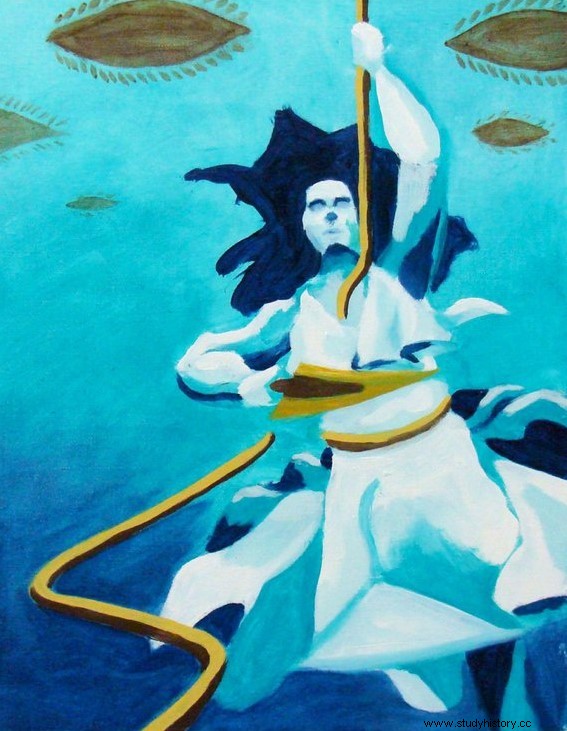
Hydna's birth and death took place in the 5th century BCE
Her father, Scyllis, was a swimmer and diver from Scione.
According to legend, her father dived into the deepest parts of every ocean.
Scyllis trained his daughter to be a swimmer, and even how to dive as he did.
Greece VS. Persia
In 480 BCE, Persian forces attacked mainland Greece.
The Persian king Xerxes I stationed part of his fleet near Mount Pelion, near Hydna's home.
A storm raged.
Hydna and her father used the storm to their advantage.
They dived into the wild waters and swam towards the Persian ships.
Persian sailors fought against the wind to maintain their boats. They did not pay attention to the swimmers who approached.
As Hydna and Scyllis approached the boats, armed with knives held in their mouths, they appeared under the waves.
With the knives, they cut the thick anchor ropes for each boat.
One by one the ships moved towards the eye to the furious stop, and crashed into each other.
Hydna and Scyllis destroyed the entire fleet.
Amphictyonis, the Greek goddess of wine and relations between nations and countries, showed gratitude for their heroism.
She dedicated statues to them at the shrine of Delphi, the holiest site of Ancient Greece.
Unfortunately, the Roman emperor Nero stole their statues to decorate his new palace.
It is unknown what became of them.
Triệu Thị Trinh
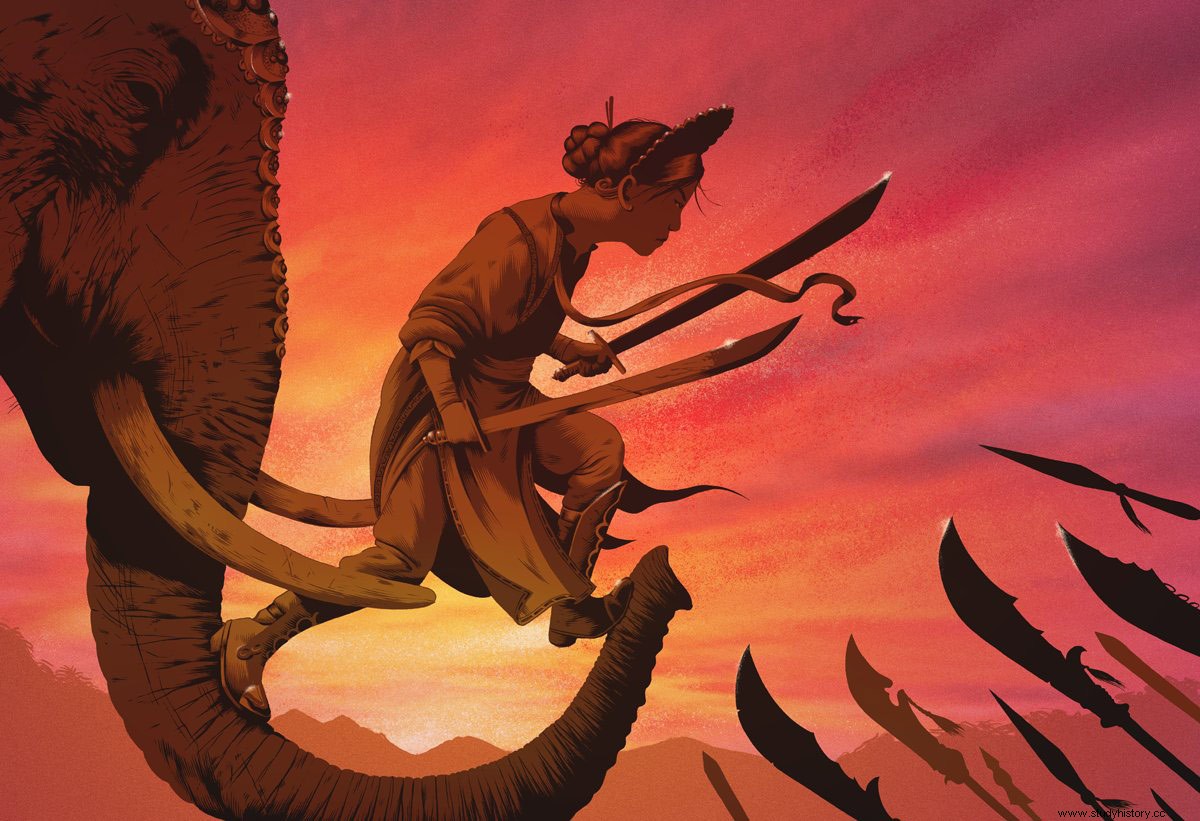
In the 200s, Vietnam was under heavy control of the eastern Wu dynasty in China.
The Chinese aimed to 'civilize' and assimilate the Vietnamese people.
Although they ruled for hundreds of years, the Vietnamese did not accept them. This led to many organized uprisings.
I 225 AD a baby girl was born to a high-ranking family in North Vietnam.
Her original name is still unknown.
Limited sources say she was orphaned as a toddler and raised by an older brother.
The Rise of Lady Triệu
In 226 AD the Wu dynasty degraded and purged the local rulers of Vietnam, members of the Shih dynasty.
An uprising ensued and the Chinese killed over 10,000 Vietnamese.
At the age of 19, Lady Triệu decided to raise her own army to fight the oppressive Chinese.
According to a legend, her eldest brother tried to dissuade her from becoming a warrior and marry her instead.
Her answer:'I will rise the storm, tread the dangerous waves, win back the fatherland and destroy the yoke of slavery. I do not want to bend my head and work as a simple housewife. "
When she was 21, her rebel army fought successfully over 30 battles against the Chinese.
At that time, the Chinese registered the outbreak of the severe uprising in Vietnam.
However, they failed to mention that a woman led it.
This was probably due to their Confucian beliefs and strong attitude towards female inferiority.
All in all, a military defeat of a female warrior would be humiliating.
Lady Triệus fall
Taizu, the emperor of the Wu dynasty, was determined to end Lady Triệu's uprising.
I 248 AD he sent reinforcements to the Vietnamese border and approved the payment to the Vietnamese who turned against the rebels.
After months of heavy fighting, the forces of the Wu dynasty defeated Lady Triệu.
Some said she was killed during the battle.
Others said that the defeat caused her so much despair that she threw herself into a river and ended her life.
The Legend of Lady Triệu
Lady Triệu became a legend and became one of the immortals.
She inspired people to fight the Chinese.
For centuries, she appeared in the dreams of Vietnamese revolutionaries, providing support and guidance.
To this day, she is a hero in Vietnam.
Mor Lü
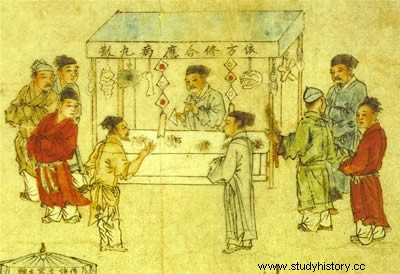
Lü Mu, or 'mother of Lü', lived during Wang Mang's reign.
Her son, Lü Yu, was executed for not collecting taxes from farmers.
Heartless, a certain Lü Mu sought revenge.
The start of the Lü Mouse uprising
Lü Mu came from a family of wealthy wine merchants.
She sold her possessions and opened a tavern as a front for recruiting followers, stockpiling weapons and buying horses.
When local children did not have money for wine, she gave them credit.
She lent food and clothes to the needy.
She went from house to house and explained why the government's high tax and conscription policy made their lives difficult.
Her efforts gathered a strong base of followers.
With her followers, she led a revolt and became the first peasant leader to rise up against Wang Mang.
Using guerrilla warfare tactics at sea and on land, Lü Mus forces took control of an entire district.
Due to natural disasters, many farmers declared bankruptcy, but taxes continued to rise.
Several joined Lü Mu.
She made sure that each unit had 100 soldiers, which she forbade to take property from farmers.
Justice for Lü Yu
After taking control of more than just one district, the rebels seized the magistrate who executed her son.
He, along with the authorities, asked for her forgiveness and mercy.
She replied that her son did not receive mercy.
The rebels beheaded the magistrate and offered his head on the altar of Lü Yu.
Lü Mouse's name spread far and wide.
As the ranks of the rebels grew to tens of thousands, they continued to launch attacks from their land base.
Concerned about Lü Mo's growing power, Wang Mang sent envoys to encourage the rebels to surrender, but they succeeded.
Thus came the start of a national movement.
Farmers across China began to revolt
When Lü Mu died of disease in 18 AD, her followers joined the Red Eyebrows. They were a group of face-painted rebels who played an important role in overthrowing Emperor Wang Mang.
A female warrior, a mother, put an end to injustice.
Mai Bhago
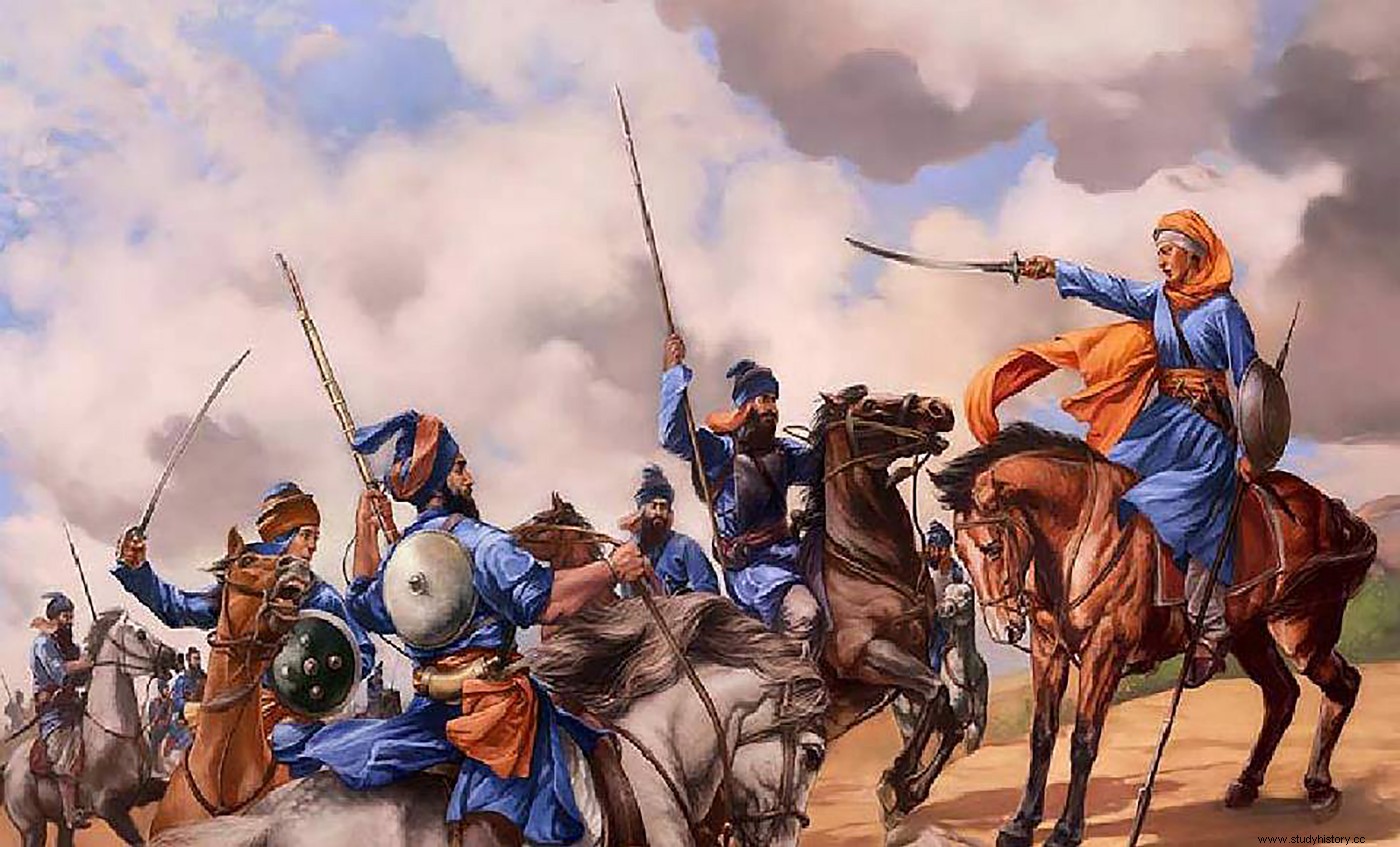
Also known as Mata Bhang Kaur, she was born in Chabal Kaban (present-day Amritsar district of Punjab), the village of the ancestral family.
She was a devoted Sikh at birth and growing up.
Her father, Malo Shah, was part of Guru Hargobind's army.
At the same time, he taught his daughter Shastar Vidye , training in arms.
Mughal Empire
The Mughal Empire tried to capture Guru Gobind Singh, the tenth Sikh guru.
By order of Emperor Aurangzeb, a large Mughal army passed on to Anandpur Sahib.
They demanded its evacuation and led a siege that lasted several months.
Inside the siege, they announced that if any Sikh said they were not a Sikh from Guru Gobind, they would be unharmed.
Mahan Singh Ratant led 40 Sikhs to tell Guru Gobind that they were not Sikhs.
The guru told them to write a document saying, "We are not your Sikhs anymore" and sign it.
All 40 but one, Bedava, signed their names on this document and left Guru Gobind Singh.
Terrified after hearing the Sikhs leave the guru, Mai Bhago searched for them.
Mai Bhago's position
Mai Bhago traveled to the village of the 40 Sikhs, with his father and brothers, and found the wives of the Sikhs.
They heard that their treacherous husbands were on their way home, and after talking to Mai Bhago, they found a way to turn the situation around.
The 40 men chali mukta , came back hungry, tired and depressed, but their wives and mothers rejected them.
They asked their husbands and sons to make up for their cowardice or wear their dresses, stay at home and behave like housewives in their place.
As they do so, their wives will wear their husbands' clothes and fight for the guru, give their lives for him and use their blood to wash away the shame their husbands brought upon them all.
Shocked by the recognition of their mistake, the 40 Chali cycled with Mai Bhago, her father and brothers.
They cycled to Amandpur Sahib to find Mughal's attack on the Guru's stronghold and the Guru and his family disappeared.
Battle of Mukhsar
Mai Bahgo and the Sikhs met the guru in the village of Khidrana, near the pool in Khidrane, the only water source in the area.
They discovered that the Guru was sending his family in a different direction, and Mughals continued to pursue him.
A chance for the 40 Sikhs to redeem themselves, along with Mai Bhago and her family, they decided on a plan.
After placing sheets on bushes to appear as tents, 3,000 Mughal soldiers advanced.
The Battle of Mukhsar began.
Mai Bahgo was the first woman in Punjab's history to fight on a battlefield.
As she, the Sikhs and 300 Turks fought, the guru and his forces set course for a height. There his forces showered arrows on Mughals.
Mai Bahgo and the Sikhs inflicted so much damage that it forced the Mughals to retreat.
When he saw Mughal's retreat, the guru, who saw little activity from the Sikhs, rode to the battlefield.
He found that everyone was dead, including Mai Bahgo's father and brothers
It was just an injured Mai Bhago and a badly wounded Mahan Singh.
Pulled up on the guru's lap, Mahan Sign said that all 40 Sikhs were fighting to free themselves.
The guru gave their forgiveness and said with Mai Bhago's father and brothers that they all died as matures.
Mai Bhago lived with the Guru in Talwand Sabo as one of his personal guards.
Her actions as a female warrior changed the course of history.
Warrior or not, she showed that the feminine power is brave, powerful and dynamic.
Mavia, Syrian warrior queen
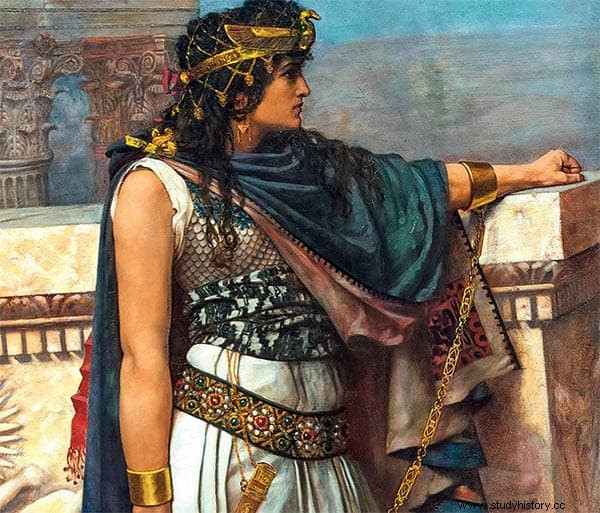
Although not a queen of Syria, Mavia controlled the semi-nomadic Tanukhid Arab tribe in Syria and Jordan.
Rebellion against the Roman army
The reasons for her revolt against Rome remain a mystery.
One possible reason is that Rome demanded men from her countries as auxiliary soldiers in their army.
The Romans found a woman who led an army ridiculous, and therefore outrageous.
When a Roman commander in Palestine summoned reinforcements, the general dismissed him because he needed help fighting a woman.
The tribes pushed Rome out of Palestine and Phenicia and rejected any Roman attempt to recapture these territories.
Her victories shocked the Roman soldiers.
Historians say that Mavia was probably inspired by the revolt of Zenobia 100 years earlier.
She also had an advantage:in her army there were troops fighting alongside the Romans.
This gave her and her troops insight into Roman military tactics and used them brutally and effectively.
Through Arabia and Palestine, and reaching the edges of Egypt, she and her troops defeated the Roman armies.
After the victory, she dictated the terms of the negotiations.
Nothing is known about her later years or death.
Onake Obavva
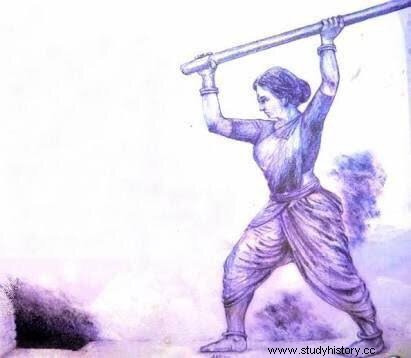
Obavva lived in the Kingdom of Chitradurga, Karnatak, India.
The Nayaka dynasty ruled for nearly 250 years.
At the end of the 18th century, the city's ownership was fought between two great powers.
Mysore Kingdom, ruled by Hyder Ali, tried to conquer Chitradurga Fortress and defeat Madakari Nayaka IV (then ruler of the Nayaka Dynasty).
Hyder Ali's spies saw a man enter the Chitradurga fort through a hole. It was large enough for one person to fit through at a time.
Obavva's brave action
Obavva was the wife of a soldier guarding the fort.
While fetching water, she heard a muffled sound of Hyder Ali's soldiers trying to enter the fort through a small hole.
She hurried home to find her husband, but found that he was going to lunch with the other soldiers.
With no other choice, she fought against the enemy soldiers alone.
She took her Onake, a long wooden club used to beat rice grains, and hid quietly next to the hole.
Every soldier whose head appeared through the hole met Obavva's bravery.
She killed each soldier and dragged his body inside the wall.
When her husband and the other soldiers came to her rescue, she killed nearly 100 soldiers.
Her husband went up to the fort and blew the horn, warning the soldiers about the army of invaders.
Nayaka's soldiers stormed and attacked Hyder Ali's troops and emerged victorious.
Obavvas arv
Obavva led the army against the enemy.
In doing so, she missed the last intruder who entered the fort.
He killed her.
She was named Onake Obavva, a combination of her first name and her favorite weapon.
Yet the people of Karnataka praised this female warrior for her courage and quick thinking.
They named a stadium in Chitradurga after her and her sculpture, installed by the government, is located near the district commissioner's office in Chitradurga.
In 2018, the Chitradurga police started "Obavva Parole", a group of female police officers who protect and educate women.
Princess Pingyang

Pingyang was the daughter of Li Yuan, a military commander in the Sui Dynasty.
The leader of the Sui dynasty was Yangdi, a harsh and unjust man. His actions made the people of China see him as a villain.
For example, he raised taxes so that he could selfishly spend more.
The whisper of a revolt came to Yangdi's ears. He became suspicious of everyone. Yangdi thought Li Yuan planned against him and needed him away.
It forced Li Yuan to start a revolt or face death.
His goal was to rule Yangdi's government and bring order and peace.
During this time, Pingyang lived with her husband, Chai Shao, the head of the palace guard.
Li Yuan warned them about the uprising.
Chai Shao went to gather the cavalry and join Li Yuan.
Pingyang escaped to the family property.
The Rise of The Army of the Lady
Pingyang used the family's money to feed the starving people in the villages around the property.
Her kindness and compassion gained the loyalty of the villagers.
Soon after, those who were able to fight formed an army under her command.
They began to move through the country.
Her strength, as well as her kindness and compassion, encouraged more to join her army.
With 70,000 troops, they became 'The Army of the Lady'.
She gave them strict rules to follow.
While Yangdi's army looted, looted and raped, she distributed food to the poor.
Across the country, villagers saw them as liberators who won their loyalty.
In the last battle of Chang'an, Pingyang teamed up with her husband and father to defeat the stronghold of the Sui dynasty.
Eventually, Li Yuan became the new emperor of the Tang Dynasty as Emperor Gaozu.
He gave Pingyang the titles "Princess" and "Zhao" (very wise and virtuous).
Not only that, but she was the first woman to be given the title "Marshal".
She died on the 23rd
For the first time in China's history, a woman was given a formal military burial.
She was a great female warrior, not only known for her bravery on the battlefield, but for her compassion that overthrew a dynasty and started a new one.
the conclusion
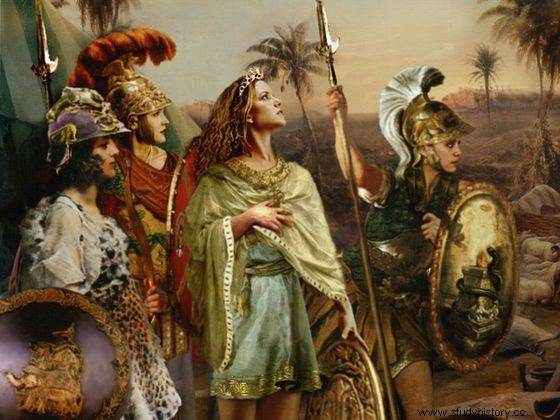
Through these stories, we see that women left their mark throughout history.
It was not only through battle in battle, but from the kindness and compassion they showed others.
Let us remember their courage and compassion when they help others in their difficulties.
Nothing can dim the light that shines inside.
- Maya Angelou.
